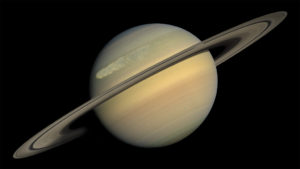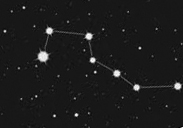The Sky in June 2017
 By Dee Sharples
By Dee Sharples
The planets traveling among the stars in the night sky have fascinated humans for thousands of years. They noticed that the stars always maintained the same positions in relation to each other and moved together in fixed patterns which we call constellations. But they also noticed five star-like objects that moved among the stars which the ancient Greeks called “wandering stars”. They were five of the planets in our solar system which are visible with the naked-eye: Mercury, Venus, Mars, Jupiter and Saturn.
In June you’ll be able to spot Jupiter, the largest planet in our solar system, looking like a very bright star high in the south as the sky darkens. Through a telescope you would be able to see the many “belts” in the atmosphere of this gas giant as it rotates in only 10 hours compared to 24 hours for Earth.

As Jupiter moves west across the night sky, the planet Saturn will rise in the southeast after sunset and move to high in the south at midnight. Saturn will reach “opposition” on June 15, which means it will be opposite the sun in our sky as viewed from Earth. It will also be closest to Earth at this time and through a telescope will be a magnificent sight with its beautiful rings.
One opportunity to view the planets and other celestial objects through a telescope is at the Strasenburgh Planetarium in Rochester every clear Saturday night. Members of the Astronomy Section of the Rochester Academy of Science will open the two telescopes on the roof of the planetarium. In the summer this free event takes place from about 9:00-10:30 PM. You will need to climb 60 steps to the telescope deck. The entrance is just to the right of the back door of the planetarium. Call the planetarium after 7:00 PM at (585) 697-1945 to confirm the telescopes will be open that night. If it’s cloudy, viewing will be canceled.

One of the star patterns that most people are familiar with is the Big Dipper, which is actually an asterism, a group of stars that are part of the constellation Ursa Major, the Great Bear. At this time of year the Big Dipper is almost overhead about 10:00 PM, looking like it’s turned upside-down as you face north. Follow the imaginary line created by the pointer stars, the two stars which form the outer side of the bowl of the Big Dipper. Extend that line about three lengths down toward the horizon to locate Polaris, the North Star. Polaris is not an especially bright star as some people mistakenly believe, but it is the only star in our sky that appears to be stationary. That’s because the Earth is tilted about 23.5 degrees on its axis causing our North Pole to point almost directly at Polaris. Every other star appears to move across the sky as the Earth rotates.
There will be a total solar eclipse in some parts of the United States on August 21, 2017. New York State will experience only about a 70% eclipse. It’s imperative to wear proper eye protection when viewing the eclipse to prevent damage to your vision. Inexpensive solar eclipse viewing glasses which will protect your eyes can be ordered on-line or purchased at the Rochester Museum and Science Center for $2.00 a pair.